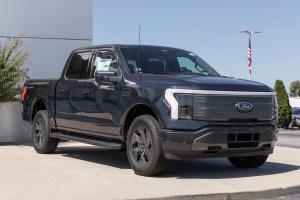We Asked Users
This survey was presented to a prequalified TCD audience in contextually relevant web articles and newsletters.
Survey participants self-selected two times, first when deciding to consume the host content and then again when deciding to participate in the survey.
Which of these factors is your biggest obstacle to purchasing an EV?
Please select one.
Which of these factors is your biggest obstacle to purchasing an EV?Survey Results
7,983 Progress Focus:
4,437 Outrage Focus:
2,861
Aggregate Insights
The 73% combined vote share for "Cost concerns" and "Range concerns" suggests that a combination of these two factors is top of mind for most potential EV buyers.
The smaller but nontrivial vote share for "Performance concerns" suggests a meaningful opportunity to educate consumers about the ability of EVs to match or exceed the performance of ICE models.
Further polling could (a) exclude cost and range concerns as variables and (b) ask about specific performance points that cause concern — i.e., "After cost and range, which of these factors is your biggest obstacle ..." — in order to determine which performance features are most often secondary concerns for buyers.
Contextual splits are determined by the topical focus and interests of the audience members participating in the survey, as described in more detail in the Insights and Methodolgy sections below.
7,983 Progress Focus:
4,437 Outrage Focus:
2,861
Split Insights
The relatively balanced responses across each of the splits reflects the extent to which EV concerns are persistent across various psychographic buyer segments.
The relative overperformance of "Range concerns" among the outrage-focused audience suggests that range anxiety is a prohibitive concern for even the most passionate potential buyers who express strong disdain for the wastefulness and environmental impact of conventional ICE vehicles.
Further polling could specifically target the outrage-focused group to determine the minimum guaranteed range they'd need to feel comfortable purchasing an EV.
Methodology
This survey was conducted among a prequalified TCD audience of likely adopters via distribution in 37 syndicated web articles. It received a total of 17,957 responses and generated segmented data across 4 primary contextual splits.
TCD surveys are embedded inline in contextually relevant web articles and newsletters. Survey participants self-select two times, first when deciding to consume the host content and then again when deciding to participate in the survey.
Contextual splits are determined by the topical focus and interests of the audience members participating in the survey. Split analysis explores the degree to which different messages — and the self-selected participants who seek them out — can shape consumer sentiment.







